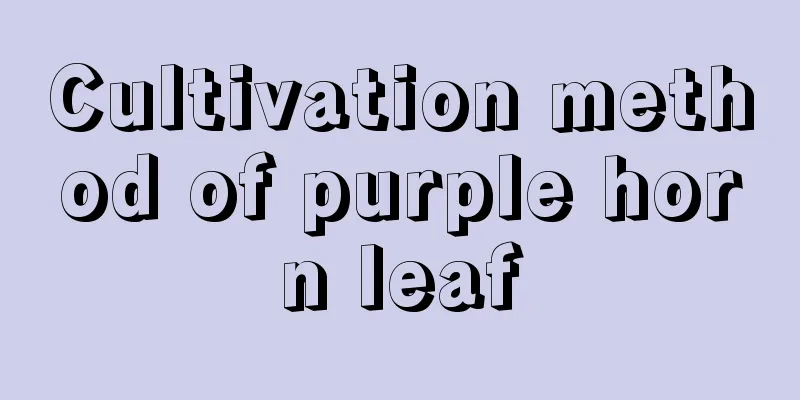Causes and prevention measures of cucumber deformed fruits (Causes of cucumber deformed fruits)

|
The normal shape of cucumbers should be an even oval from top to bottom. In modern production, cucumber diseases can cause cucumbers to become curled or thin. The most common problem is cucumber deformity, which is prone to bending and thin waists . Such cucumbers are not only of low quality but also affect the overall yield. To prevent them, we must first understand the causes of deformed cucumbers. Causes of cucumber deformity
Curved cucumbers are easily formed due to incomplete fertilization of the cucumber, which leads to unbalanced development of the fruit . During the growth process of the cucumber, the fruits compete with each other for nutrients , which can easily cause some cucumbers to become malnourished and become curved. The bent melon may also encounter drastic changes in the production environment, such as a sudden change from cloudy days to sunny days, or insufficient water and nutrients caused by high temperature.
The formation of pointed melons is mostly due to problems with varieties and fertilizer supply. Some flowering varieties have weak fruiting ability, and the female flowers are not fertilized during the flowering period. The lack of seeds will lead to a lack of nutrients in the fruit and insufficient power to transport them to the fruit. This will cause intermittent malnutrition. If the cucumber lacks a lot of water in the early stage of growth, but is adequately supplied with water and fertilizer in the later stage, it is easy to produce big-bellied cucumbers. Cucumber deformity prevention and treatment methods1. Scientific fertilizationFertilization should be done reasonably, with sufficient base fertilizer. When increasing fertilizer, organic fertilizer and phosphorus and potassium fertilizer should be used as the main fertilizers, coordinating with each other, and adopting the method of applying small amounts and multiple times. The dosage of helium and nitrogen fertilization should be scientifically adjusted to prevent excessive growth of the plants and waste of nutrients. In the middle and late stages of growth, some fertilizer can be sprayed on the leaves to prevent premature aging caused by malnutrition. 2. Control the ambient temperature during plant growthIt is necessary to control the temperature. If greenhouse cultivation is adopted, the night temperature should be maintained at 10 to 12 degrees, and the day temperature should be maintained at 20 to 28 degrees. The soil should be kept moist, and the air humidity should be maintained at about 75% during the entire growth period. The temperature needs to change. The temperature before noon should be slightly higher, maintained at 30 degrees , and after noon the temperature should drop by 15 degrees to 23 degrees . This can inhibit the nutritional growth of cucumbers and excessive consumption. The temperature at midnight should be around 12 degrees, which can promote photosynthesis and store nutrients. In the second half of the night, the temperature should be kept at around 11 degrees Celsius. This can inhibit the cucumber's breathing and its own consumption. Ventilation should be maintained in time. 3. Timely prevention and control of diseases and insect pestsAt the same time, we must strengthen disease and pest control. The most common diseases and pests of cucumber are blight, gray mold, etc. Many cucumbers are now sprayed with pesticides, and the spraying is quite strong, but the disease does not show any improvement. We can increase the application of smoke agents, which is a better method for disease prevention. 4. Whole cucumber plantsTimely pruning and adjusting the growth direction of cucumbers can avoid hindering their growth. At the same time, side branches should be cut off, especially when the main vine has not been topped, to concentrate nutrients and do a good job of caring for the growth of the main vine. 5. Do a good job of pinching the main vineWhen the main vine is topped, pinch off the top to retain nutrients for growth. After young melons grow on the side branches, leave one or two leaves for topping. ConclusionCucumber deformity is also one of the common problems in cucumber cultivation, although this phenomenon does not cause a significant decrease in yield. However, it will also greatly affect the appearance and quality of the cucumber itself, and will affect sales. During the planting process, we must master scientific and reasonable methods, and at the same time understand the prevention and control of cucumber deformities in order to better carry out production and planting. |
Recommend
How to eat mango? Can you eat raw mango?
1. How to eat mango 1. How to eat Direct consumpt...
What are the ways to propagate Monstera? Can it be propagated at home?
1. Reproduction method 1. Cuttings: Monstera can ...
How many pounds of chrysanthemum can be produced per mu?
Chrysanthemum yield per mu Chrysanthemum is a nat...
How to propagate the saffron vine
The fragrant vine is native to the tropical Ameri...
The efficacy and function of Taiwan Veratrum
1. Ornamental effect Taiwan Veratrum has a great ...
When is the best time to sow chili pepper seeds?
Pepper seed sowing time The fruiting period of ch...
How to prune the branches and leaves of the money tree (tutorial) How to shape and prune the golden branch and jade leaf bonsai
The best time to prune the money tree is in late ...
Can peonies be planted in pots?
Can peonies be planted in flower pots? Peonies ca...
Can the Chinese toon tree be potted?
Can the Chinese toon tree be potted? The Chinese ...
Cultivation method of Northeast Forsythia
1. Soil: Forsythia suspensa has a strong adaptabi...
How to divide white palm flowers into pots, when and how to divide them into pots
Time to divide white palm flowers into pots It is...
Euphorbia gejin propagation method
1. Cutting 1. Time: The time for cuttings can be ...
How to water bonsai with moss
Watering method: Let’s first talk about the growt...
Can the Custard Apple tree be propagated by cuttings?
There are many ways to propagate the sugar apple ...
Will eating pumpkin make you fat? What are the advantages and disadvantages of eating pumpkin?
1. Will eating pumpkin make you fat? Eating pumpk...









